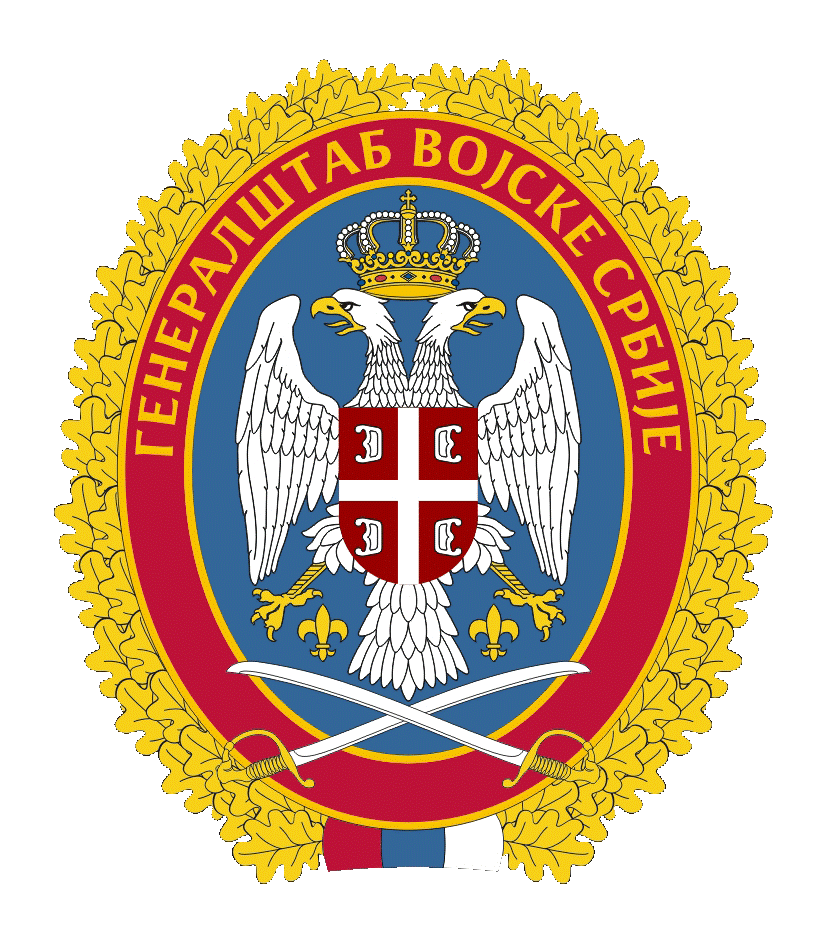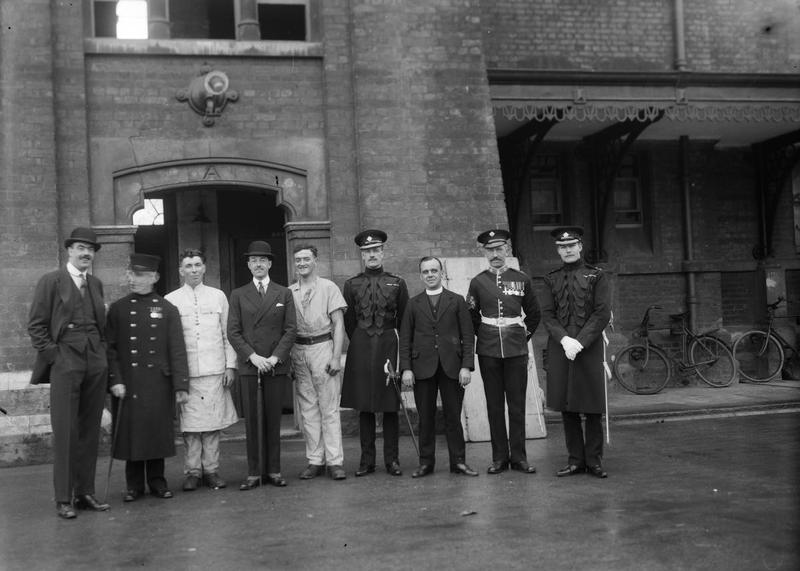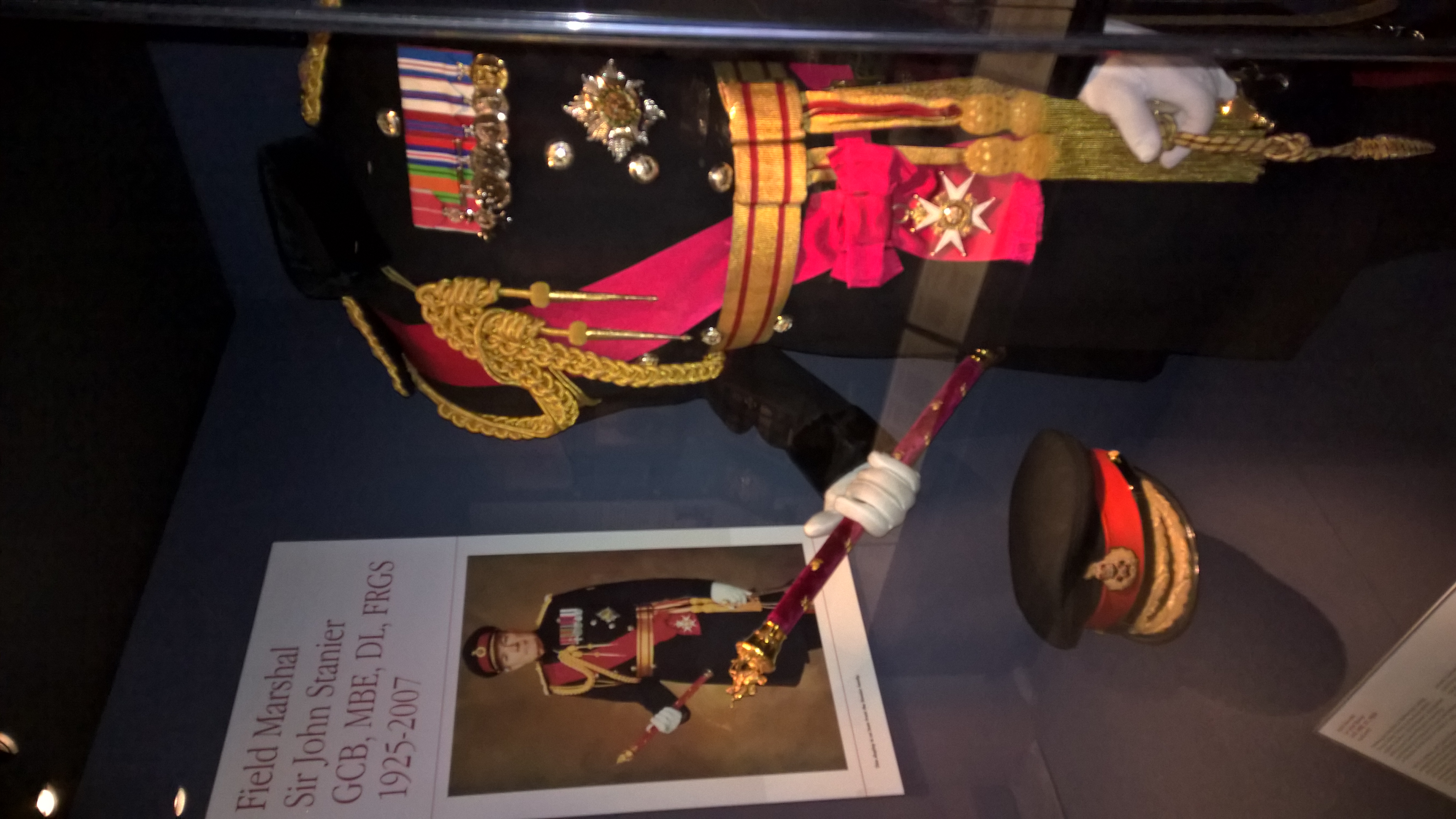|
Guard Of The Serbian Armed Forces
The Guard of the Serbian Armed Forces ( sr, Гарда Војске Србије, Garda Vojske Srbije) is an honour guard unit of the Serbian Armed Forces under the direct command of the General Staff. Besides ceremonial duties its main tasks include security and logistics missions. History The Guard was formed on 6 May 1830, as part of the Armed Forces of the Principality of Serbia, by the order of Prince Miloš Obrenović. It originated with 73 people selected for service in the Guard. On May 12, 1838, the Guard gained legal status from a special decree of Prince Miloš. In 1883, the Guard was transformed into the Royal Guard. The Royal Serbian Guard was considered to be an elite unit of the Royal Serbian Army and only the best conscripts were chosen to serve in its ranks. In 1914 the Royal Guard numbered a few thousand men and took part in all major battles of the Balkans theatre of World War I (until the liberation in 1918). The Royal Guard was commanded by Lieutenant Colo ... [...More Info...] [...Related Items...] OR: [Wikipedia] [Google] [Baidu] |
Lieutenant Colonel (Eastern Europe)
''Podpolkovnik'' (russian: подполко́вник, lit=sub –, junior – , or lower regimentary) is a military rank in Slavic and nearby countries which corresponds to the lieutenant colonel in the English-speaking states and military. In different languages the exact name of this rank maintains a variety of spellings. The transliteration is also in common usage for the sake of tradition dating back to the Old Slavonic word "polk" (literally: regiment sized unit), and include the following names in alphabetical order: # Bosnia and Herzegovina and Croatia — () # Bosnia and Herzegovina, Montenegro and Serbia — () # Bulgaria — # Czech Republic — () # Georgia — () # North Macedonia — # Poland — () # Russia — (''podpolkovnik'') () # Slovenia — # Slovakia — # Ukraine — (''pidpolkovnyk'') Russia In Russia, the rank of lieutenant colonel is called (russian: подполко́вник, lit=sub-colonel). First it appeared in Russia as appoi ... [...More Info...] [...Related Items...] OR: [Wikipedia] [Google] [Baidu] |
Armed Forces Of Serbia And Montenegro
The Armed Forces of Serbia and Montenegro ( sh-Cyrl-Latn, Војска Србије и Црне Горе, Vojska Srbije i Crne Gore, ВСЦГ / ''VSCG'') included ground forces with internal and border troops, naval forces, air and air defense forces, and civil defense. Preceding the ''VSCG'' was the Yugoslav Army (1992–2003; sh-Cyrl-Latn, link=no, separator=" / ", Војска Југославије, BJ , Vojska Jugoslavije, VJ, Army of Yugoslavia) from the remnants of the Yugoslav People's Army (JNA), the military of SFR Yugoslavia. The state, then named Federal Republic of Yugoslavia, participated in the Yugoslav Wars with limited direct intervention of its own armed forces. Following the end of the Wars and the constitutional reforms of 2003 by which the state was renamed "Serbia and Montenegro", the military accordingly changed its name. The military was heavily involved in combating Albanian separatists during the Kosovo War and Preševo Valley conflict, and also engage ... [...More Info...] [...Related Items...] OR: [Wikipedia] [Google] [Baidu] |
Breakup Of Yugoslavia
The breakup of Yugoslavia occurred as a result of a series of political upheavals and conflicts during the early 1990s. After a period of political and economic crisis in the 1980s, constituent republics of the Socialist Federal Republic of Yugoslavia split apart, but the unresolved issues caused bitter inter-ethnic Yugoslav wars. The wars primarily affected Bosnia and Herzegovina, neighbouring parts of Croatia and, some years later, Kosovo. After the Allied victory in World War II, Yugoslavia was set up as a federation of six republics, with borders drawn along ethnic and historical lines: Bosnia and Herzegovina, Croatia, Macedonia, Montenegro, Serbia, and Slovenia. In addition, two autonomous provinces were established within Serbia: Vojvodina and Kosovo. Each of the republics had its own branch of the League of Communists of Yugoslavia party and a ruling elite, and any tensions were solved on the federal level. The Yugoslav model of state organisation, as well as a "middle ... [...More Info...] [...Related Items...] OR: [Wikipedia] [Google] [Baidu] |
Military District
Military districts (also called military regions) are formations of a state's armed forces (often of the Army) which are responsible for a certain area of territory. They are often more responsible for administrative than operational matters, and in countries with conscript forces, often handle parts of the conscription cycle. Navies have also used a similar model, with organizations such as the United States Naval Districts. A number of navies in South America used naval districts at various points in time. Algeria Algeria is divided into six numbered military regions, each with headquarters located in a principal city or town (see People's National Army (Algeria)#Military regions). This system of territorial organization, adopted shortly after independence, grew out of the wartime wilaya structure and the postwar necessity of subduing antigovernment insurgencies that were based in the various regions. Regional commanders control and administer bases, logistics, and housing, a ... [...More Info...] [...Related Items...] OR: [Wikipedia] [Google] [Baidu] |
Yugoslav People's Army
The Yugoslav People's Army (abbreviated as JNA/; Macedonian and sr-Cyrl-Latn, Југословенска народна армија, Jugoslovenska narodna armija; Croatian and bs, Jugoslavenska narodna armija; sl, Jugoslovanska ljudska armada, JLA), also called the Yugoslav National Army, was the military of the Socialist Federal Republic of Yugoslavia and its antecedents from 1945 to 1992. Origins The origins of the JNA started during the Yugoslav Partisans of World War II. As a predecessor of the JNA, the People's Liberation Army of Yugoslavia (NOVJ) was formed as a part of the anti-fascist People's Liberation War of Yugoslavia in the Bosnian town of Rudo on 22 December 1941. After the Yugoslav Partisans liberated the country from the Axis Powers, that date was officially celebrated as the "Day of the Army" in the Socialist Federal Republic of Yugoslavia (SFR Yugoslavia). In March 1945, the NOVJ was renamed the "Yugoslav Army" ("''Jugoslavenska/Jugoslovenska Armija' ... [...More Info...] [...Related Items...] OR: [Wikipedia] [Google] [Baidu] |
Mediterranean And Middle East Theatre Of World War II
The Mediterranean and Middle East Theatre was a major theatre of operations during the Second World War. The vast size of the Mediterranean and Middle East theatre saw interconnected naval, land, and air campaigns fought for control of the Mediterranean, North Africa, the Horn of Africa, the Middle East and Southern Europe. The fighting in this theatre lasted from 10 June 1940, when Italy entered the war on the side of Germany, until 2 May 1945 when all Axis forces in Italy surrendered. However, fighting would continue in Greece – where British troops had been dispatched to aid the Greek government – during the early stages of the Greek Civil War. The British referred to this theatre as the Mediterranean and Middle East Theatre (so called due to the location of the fighting and the name of Middle East Command), the Americans called it the Mediterranean Theater of War and the German informal official history of the fighting is The Mediterranean, South-East Europe, and North A ... [...More Info...] [...Related Items...] OR: [Wikipedia] [Google] [Baidu] |
Harold Alexander, 1st Earl Alexander Of Tunis
Harold Rupert Leofric George Alexander, 1st Earl Alexander of Tunis, (10 December 1891 – 16 June 1969) was a senior British Army officer who served with distinction in both the First and the Second World War and, afterwards, as Governor General of Canada and the first Lord Lieutenant of Greater London in 1965. Alexander was born in London to aristocratic parents, and was educated at Harrow before moving on to the Royal Military College, Sandhurst, for training as an army officer of the Irish Guards. He rose to prominence through his service in the First World War, receiving numerous honours and decorations, and continued his military career through various British campaigns across Europe and Asia. In the Second World War, Alexander oversaw the final stages of the Allied evacuation from Dunkirk and subsequently held high-ranking field commands in Burma, North Africa and Italy, including serving as Commander-in-Chief Middle East and commanding the 18th Army Group in Tunis ... [...More Info...] [...Related Items...] OR: [Wikipedia] [Google] [Baidu] |
Field Marshal (United Kingdom)
Field Marshal (FM) has been the highest rank in the British Army since 1736. A five-star rank with NATO code OF-10, it is equivalent to an Admiral of the Fleet (Royal Navy), Admiral of the Fleet in the Royal Navy or a Marshal of the Royal Air Force in the Royal Air Force (RAF). A Field Marshal's insignia consists of two crossed batons surrounded by yellow leaves below St Edward's Crown. Like Marshals of the RAF and Admirals of the Fleet, Field Marshals traditionally remain officers for life, though on half-pay when not in an appointment. The rank has been used sporadically throughout its history and was vacant during parts of the 18th and 19th centuries (when all former holders of the rank were deceased). After the Second World War, it became standard practice to appoint the Chief of the General Staff (United Kingdom), Chief of the Imperial General Staff (later renamed Chief of the General Staff (United Kingdom), Chief of the General Staff) to the rank on his last day in the post. ... [...More Info...] [...Related Items...] OR: [Wikipedia] [Google] [Baidu] |
Supreme Headquarters (Yugoslav Partisans)
The Supreme Headquarters was created in June 1941 by the Central Committee of the Yugoslav Communist Party after the German-led Axis invasion of Yugoslavia of 6 April 1941. It was the main command and staff body of the Yugoslav Partisans, with Josip Broz Tito at its head. Initially titled Partisan Chief Headquarters when it was created on 27 June 1941, it was renamed at the Stolice conference of 26–27 September 1941. Its full name became the Supreme Headquarters of the People's Liberation Partisan Detachments. From January 1942, the headquarters became the Supreme Headquarters of the People's Liberation Partisan and Volunteer Army of Yugoslavia to allow for the incorporation of "Volunteer Detachments" consisting of insurgents that were not willing to formally become Partisans, most of whom were Serb nationalist Chetniks. By November 1942, this experiment had clearly failed, and it was again renamed the Supreme Headquarters of the People's Liberation Army and Partisan Detachment ... [...More Info...] [...Related Items...] OR: [Wikipedia] [Google] [Baidu] |
Josip Broz Tito
Josip Broz ( sh-Cyrl, Јосип Броз, ; 7 May 1892 – 4 May 1980), commonly known as Tito (; sh-Cyrl, Тито, links=no, ), was a Yugoslav communist revolutionary and statesman, serving in various positions from 1943 until his death in 1980. During World War II, he was the leader of the Yugoslav Partisans, often regarded as the most effective resistance movement in German-occupied Europe. He also served as the president of the Socialist Federal Republic of Yugoslavia from 14 January 1953 until his death on 4 May 1980. He was born to a Croat father and Slovene mother in the village of Kumrovec, Austria-Hungary (now in Croatia). Drafted into military service, he distinguished himself, becoming the youngest sergeant major in the Austro-Hungarian Army of that time. After being seriously wounded and captured by the Russians during World War I, he was sent to a work camp in the Ural Mountains. He participated in some events of the Russian Revolution in 1917 and the subs ... [...More Info...] [...Related Items...] OR: [Wikipedia] [Google] [Baidu] |
Yugoslav Partisans
The Yugoslav Partisans,Serbo-Croatian, Macedonian, Slovene: , or the National Liberation Army, sh-Latn-Cyrl, Narodnooslobodilačka vojska (NOV), Народноослободилачка војска (НОВ); mk, Народноослободителна војска (НОВ); sl, Narodnoosvobodilna vojska (NOV) officially the National Liberation Army and Partisan Detachments of Yugoslavia, sh-Latn-Cyrl, Narodnooslobodilačka vojska i partizanski odredi Jugoslavije (NOV i POJ), Народноослободилачка војска и партизански одреди Југославије (НОВ и ПОЈ); mk, Народноослободителна војска и партизански одреди на Југославија (НОВ и ПОЈ); sl, Narodnoosvobodilna vojska in partizanski odredi Jugoslavije (NOV in POJ) was the communist-led anti-fascist resistance to the Axis powers (chiefly Germany) in occupied Yugoslavia during World War II. Led by Josip Broz T ... [...More Info...] [...Related Items...] OR: [Wikipedia] [Google] [Baidu] |







